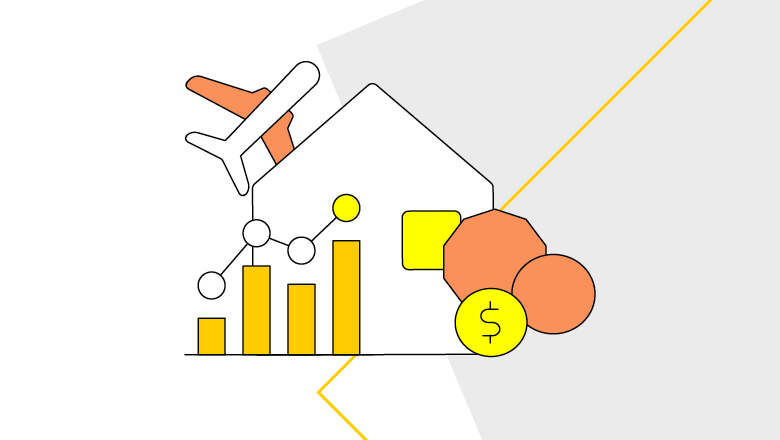The CommBank HSI Index is based on 12 spending categories, with a breakdown provided between goods and services, retail and non-retail, as well as essential and discretionary spending. Spending activity for each Australian State is tracked and a separate Home Buying Index also measures home lending data.
CBA Chief Economist Stephen Halmarick said the new report built upon the capabilities of the previous Household Spending Intentions series, with CBA payments data now aligned to Australian Bureau of Statistics spending categories and census-weighting to be nationally representative, as well as being seasonally adjusted.
“The latest findings of CommBank Household Spending Insights Index provide powerful insights into Australian consumer activity at a critical time for the country economically. It is a very comprehensive report and includes a number of statistical enhancements that build on our previous tracking of consumer spending.
“The CommBank HSI Index for July was unchanged at 135.2, but with the annual rate of spending growth dropping to only 1.3 per cent from a peak of 18.2 per cent in August 2022. Spending gains in July in Household goods, Transport, Hospitality, Education, Insurance, Health and Communications & digital were offset by declines in Household services, Recreation, Utilities, Motor vehicles and Food & beverage goods spending.”
The strongest State for household spending growth in July was South Australia (+1.9 per cent), followed by Victoria and NSW (both +1.7 per cent), while Northern Territory (+0.1 per cent) and Queensland (0.0 per cent) were flat. However over the past 12 months Western Australia (+3.5 per cent), South Australia and Northern Territory (both +3.4 per cent) saw the strongest household spending growth, and NSW (-0.2 per cent) and Victoria (-0.3 per cent) the weakest.
“The effects of 400bp of RBA interest rate increases is clearly reflected in a significant overall slowdown in household spending as measured by the CommBank HSI Index. Monetary policy is now restrictive and financial conditions will continue to tighten in the months ahead on the lagged effect of RBA interest rate increases and the fixed rate mortgage refinancing task. We continue to expect household spending to weaken further over the remainder of 2023 and 2024.
“While the RBA is likely to hold the cash rate at 4.1 per cent for an extended period, we expect it will start lowering interest rates in March next year to 3.1 per cent by the end of 2024 - in response to a slowing economy, inflation closer to target and a softer labour market,” Mr Halmarick commented.
CBA Executive General Manager of Quants, Data, Analytics and Technology (QDAT), David Watts, said the new report combines the recognised analytical strength of the bank’s Global Economic & Markets Research team with data provided by CommBank iQ, a joint venture with data science and artificial intelligence company Quantium.
“As Australia’s largest bank, our de-identified customer transaction data provides powerful insights into consumer spending trends. Released each month ahead of the official ABS quarterly reports on consumer spending, this new CommBank HSI Index gives our institutional and business clients advanced notice and analysis of developing spending trends and their potential impact,” said Mr Watts.
CBA Group Executive of Institutional Banking & Markets Andrew Hinchliff said the QDAT business was focused on providing the bank’s clients with leading data and analytics capabilities, and that the new monthly CommBank HSI Index will highlight how macro-economic trends are impacting Australian households and businesses.
“Consumer spending is the largest component of the Australian economy and central to understanding how it is performing, as well as planning for the future. This is why businesses, governments and major policy setting institutions like the RBA closely follow measures of consumer spending. The CommBank HSI Index provides a unique and current read on consumer spending behaviour and how macro developments like changing RBA interest rates are playing out in the real economy,” Mr Hinchliff said.
The CommBank HSI Index uses all CBA credit and debit card transactions (including ATM, BPAY and direct debit payments) to show national and State based Australian consumer spending each month. Future release dates for 2023 are 14 September, 12 October, 14 November and 14 December. For more information on the monthly CommBank HSI visit: commbank.com.au/hsi
Things you should know: NOT INVESTMENT RESEARCH. The Commonwealth Bank ‘Household Spending Insights’ is not investment research and nor does it purport to make any recommendations. The Commonwealth Bank ‘Household Spending Insights’ has been prepared without taking into account your objectives, financial situation (including your capacity to bear loss), knowledge, experience or needs. You should not act on the information contained in this document. To the extent that you choose to make any investment decision after having read this document, you should not rely on it but consider its appropriateness and suitability to your own objectives, financial situation and needs, and, if appropriate, seek professional or independent financial advice, including tax and legal advice. The data used in the ‘Commbank Spending Insights’ series is a combination of CBA Data and publically available Australian Bureau of Statistics (ABS), CoreLogic and Reserve Bank of Australia data. Any reference made to the term ‘CBA data’ means the proprietary data of the Bank that is sourced from the Bank’s internal systems and may include, but is not limited to, home loan data, credit card transaction data, merchant facility transaction data and applications for credit. All customer data used, or represented, in this report is de-identified before analysis and is used, and disclosed, in accordance with the Group’s Privacy Policy. Commonwealth Bank of Australia ABN 48 123 123 124 AFSL 234945

